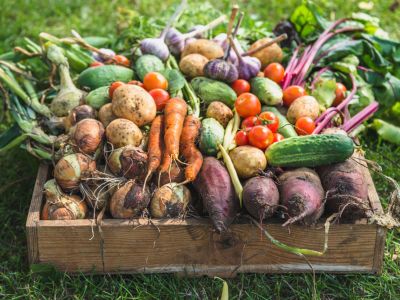What is a Climate Victory Garden?
Natural fluctuations in atmospheric carbon dioxide levels and subsequent warming trends have cycled throughout the history of our planet. Since the 1950’s, the amount of heat-trapping gases has skyrocketed to unprecedented levels. The result is imminent climate change in the form of global warming. Scientists link this upward trend to our modern lifestyle and the burning of fossil fuels. Reducing our carbon footprint is one way to slow the progression of climate change. To further protect our planet, Green America has created the Climate Victory Garden initiative. This program encourages Americans to plant a garden for climate change. Participants can register their gardens on Green America’s website.
How Does the Climate Victory Garden Initiative Work?
Based on the logic that growing produce at home reduces greenhouse gas emissions, gardeners are encouraged to adopt 10 “carbon-capturing” practices as a way to garden for climate change. This Washington D.C. based non-profit encourages non-gardeners to pick up a hoe and join in by planting a sustainable Victory Garden too. The Climate Victory Garden initiative works by not only reducing the consumption of fossil fuels needed for the commercial mass production and delivery of produce, but also by fostering the re-absorption of carbon dioxide from the atmosphere. The latter occurs as plants use photosynthesis and sunlight to convert carbon dioxide into energy. Planting a backyard sustainable Victory Garden is another tool we have for reducing atmospheric carbon dioxide.
Carbon Capturing Practices for a Sustainable Victory Garden
Gardeners wishing to join the Climate Victory Garden initiative are encouraged to adopt as many of these carbon-capturing practices as possible when planting a garden for climate change:
Grow edible plants – Cultivate foods you enjoy and reduce your reliance on commercially-grown produce.Compost – Use this organically-rich material to add nutrients to the garden and keep plant material from entering landfills where it contributes to the production of greenhouse gases.Plant perennials – Plant perennials and add trees for their amazing ability to absorb carbon dioxide. Grow food-bearing perennials in a sustainable Victory Garden to reduce soil disturbance. Rotate crops and plants – Rotating crops is a garden management practice that keeps plants healthier which produces higher crop yields and reduces chemical use.Ditch chemicals – Grow healthier, safer food using organic gardening methods.Use people power – Whenever possible, reduce carbon emissions from internal combustion engines.Keep soils covered – Apply mulch or plant a cover crop to prevent evaporation and erosion.Encourage biodiversity – A garden for climate change utilizes a variety of plants to create a balanced ecosystem which encourages pollinators and wildlife.Integrate crops and animals – Don’t limit your sustainable Victory Garden practices to plants. Control weeds, reduce mowing, and produce more food organically by raising chickens, goats, or other small farm animals.
